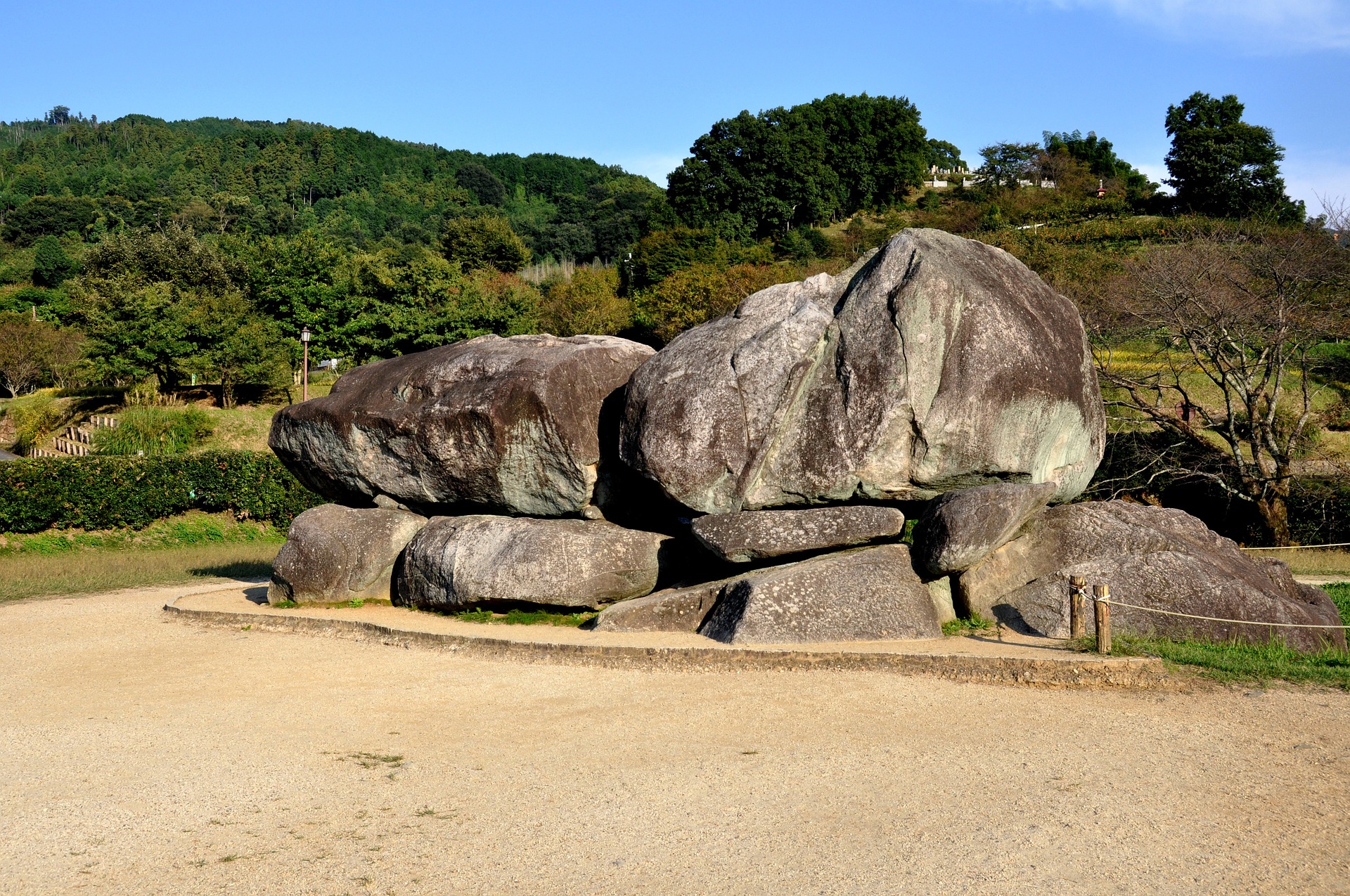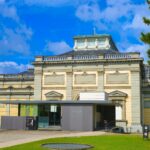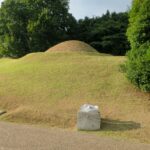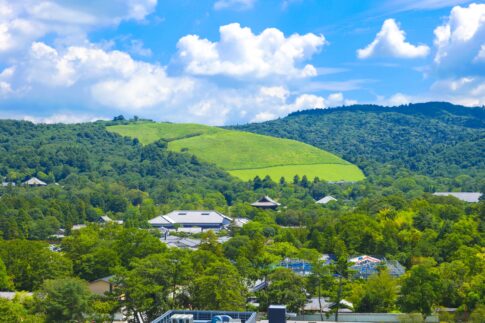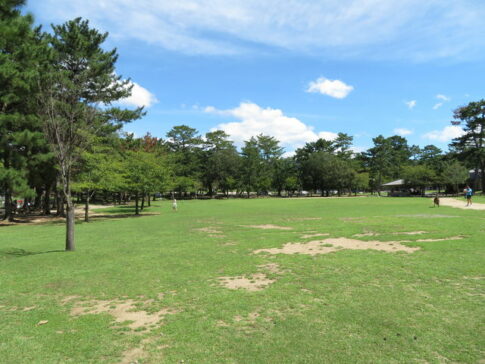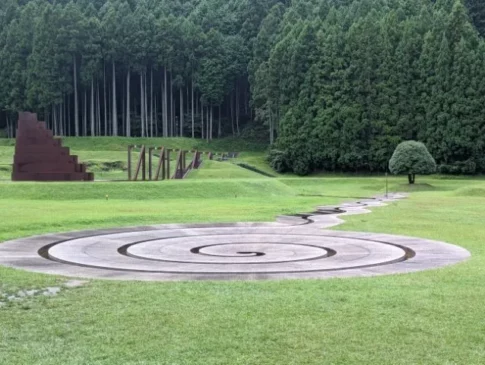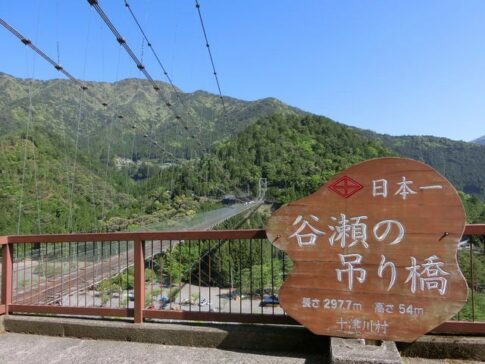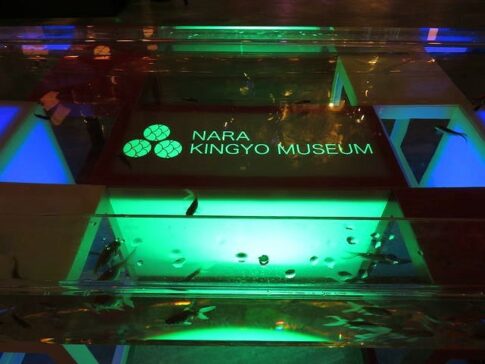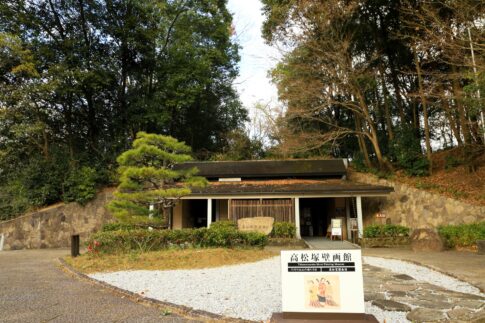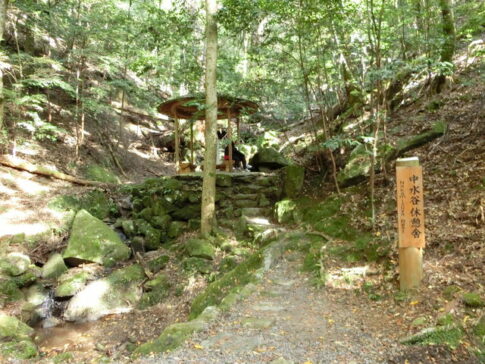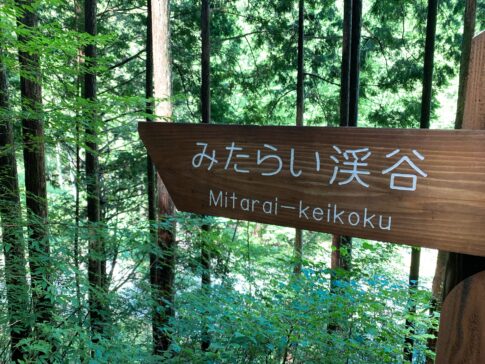The Ishibutai Kofun Tumulus in Nara Prefecture is one of the largest square mounds in Japan.
It is famous for its mound that has been dug out.
It is quite famous among kofun tumuli.
Was it actually dug up by Emperor Suiko?
Was it dug up by the coup d’etat of the Soga clan? What a mysterious tumulus.
If you are interested in mysterious thing, it’s nice place to visit.
Let’s take a look at the Ishibutai Kofun Tumulus together!
What you need to know before visiting Ishibutai Tumulus
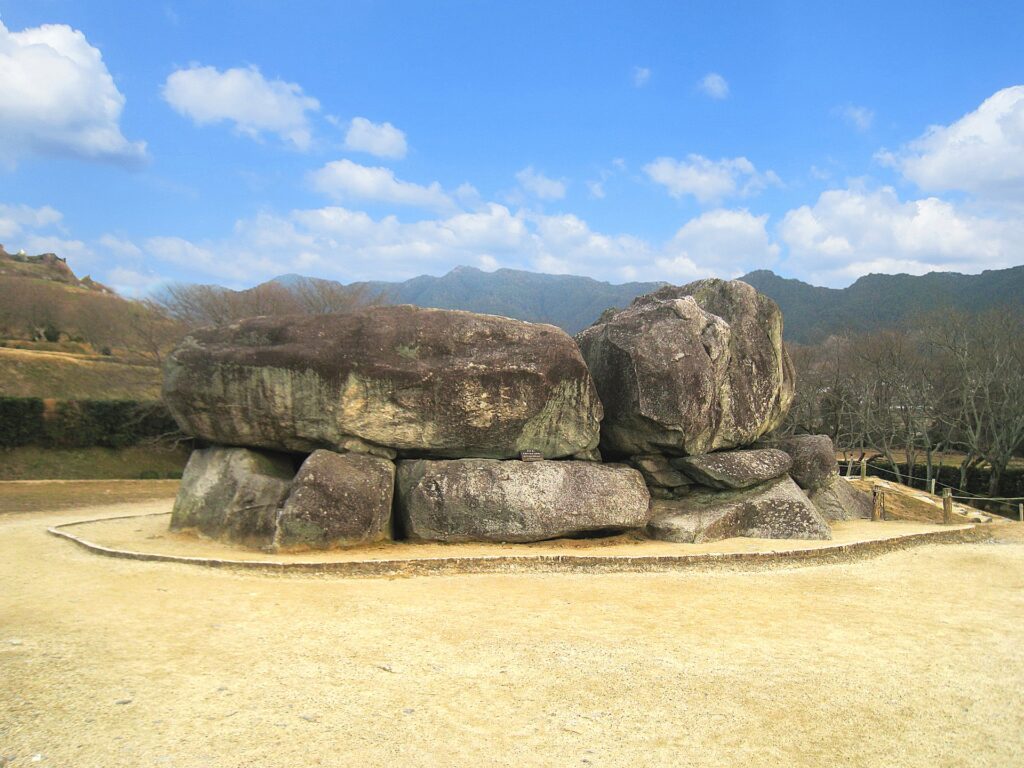
1. Basic Information
Built in the 6th century.
The stone chamber tumulus was built by piling up 30 giant stones. Its scale is one of the largest in Japan.
The mound is called Ishibutai (stone stage) because of the flat top surface of the exposed ceiling stones due to the loss of the fill.
The mound is a square mound with 50 m sides and is surrounded by an 8.4 m wide moat.
The total weight of the stones is estimated at 2,300 tons, and the largest rock in the tomb, the ceiling stone, weighs approximately 77 tons on the south side and 64 tons on the north side.
It is unknown whose tomb this huge burial mound is, but since Soga Umako’s garden was located nearby, it is widely believed that it may be his.
It is also said that the stone chamber is exposed because later generations, repelled by Umako’s arrogant attitude, removed the sealed earth.
Surrounding the garden is a lawn area, where peach and cherry blossoms bloom in spring and higanbana (cluster amaryllis) in autumn.
Located in the center of the Ishibutai area in Asuka National Historical Park, this is one of the largest square mounds in Japan.
It has a unique shape in that no fill remains on the mound, exposing a huge, double-sleeved, side-anchored stone chamber.
The roof stone has a wide, flat top, giving it the appearance of a stage, hence the name “Ishibutai” (stone stage).
The total weight of the 30 or so rocks is approximately 2,300 tons, and the ceiling stone in particular is quite heavy, weighing approximately 77 tons, indicating the superior civil engineering and transportation technology of the time when it was built.
Although it is not known who is buried here, it is believed to be the tomb of Soga Umako, a powerful man in the early 7th century and the grandfather of Soga Iruka, who was destroyed in the Taika Reform of the Taika Era.
2. History of Ishibutai Tumulus
Excavations from 1933 to 1935 confirmed the existence of a square mound, moat, and outer moat, and that it was constructed by breaking up a small burial mound from the 6th century, and it is estimated to have been built in the early 7th century.
Ishibutai Kofun Tumulus in Past Literature
Ishibutai Kofun tumulus seems to have long since lost its upper part of the mound to expose the ceiling stone of the stone chamber, as described in various documents.
In 1772, the “Kankasa Nikki (Diary of a Buddhist Priest)” written by Nobunaga Motoya also mentions this.
According to the description, Ishibutai tumulus was considered as a pair with Miyakotsuka tumulus located south of Ishibutai tumulus, and each of them seems to have had their own legends of emperors Suiko and Yomei.
In the “Uka Nikki (Diary of Uka)” written by Tsugawa Nagamichi in 1829, there is an additional consideration that the tomb may be that of Soga Umako.
In “Saigoku Sanjusanjosho Meisho Zue” (Illustrations of the 33 Famous Places in the Western Provinces) by Gyo Kansei in 1848, it is described, along with an illustration, as a temporary burial place for Emperor Temmu, with a height of approximately 2 ken (3.6 m) and a circumference of approximately 10 ken (18 m).
3. Visitor Information
Admission Hours: 8:30-17:00 (reception until 16:45)
Closed: Open all year round
Admission 300 (250) yen for adults, 100 (50) yen for high school and elementary school students
Access 3 min. walk from Ishibutai bus stop.
Parking: Yes, parking is available for a fee.
Location 133 Shimajo, Asuka-mura, Takaichi-gun, Nara
Contact Asuka Tourist Association 0744-54-3240
4. Highlights of Ishibutai Tumulus
- One of the largest square burial mounds in Japan
This huge burial mound is believed to be the tomb of Umako (Soga no Umako), since his garden was located near here, but the truth is not yet known.
- Umashi Winter Tour Special Event
The inside of Miyakotsuka Kofun Tumulus, which is usually closed to the public!
Ishibutai Kofun Tumulus, one of the largest stone chambers, and Asukadera Temple will also be open to the public.
The Soga clan, which reigned over the Yamato region from the 6th to the 7th century, was the largest clan in Japan.
The tour guide will lead you to Asukadera Temple, the first temple in Japan, which was built at the behest of Soga Umako, and Ishibutai Kofun, one of the largest stone chambers in Japan.
Please enjoy a stroll in Asuka.
The Asukadera Temple may not be visited due to special events.
Date of the tour
12/3 (Sat) 12/11 (Sun) 1/14 (Sat) 1/29 (Sun) 2/11 (Sat, holiday) 2/19 (Sun) 3/11 (Sat) 3/19 (Sun)
(This information is for the year 2023.)
5. How Ishibutai Tumulus was Build
The right side sandbags are removed in order to balance the weight and gradually float the boulders.
↓
The stone is carried by lever, roller, wheel, pulley, etc.
↓
While placing the stones, fill the earth and straighten them.
↓
After placing the overhead stone, remove the soil from inside, dig a moat covered with sealed soil, and wipe the top with pebbles to complete the work.
Summary
How was it?
Ishibutai tumulus has many mysteries, such as its shape and historical background.
The more you research, the more mysterious and interesting the tumulus becomes.
There are many places to stroll around the area, as well as many stylish old-fashioned cafes where you can stop by on your way to cycling, so I think you can enjoy the area in every season throughout the year!
